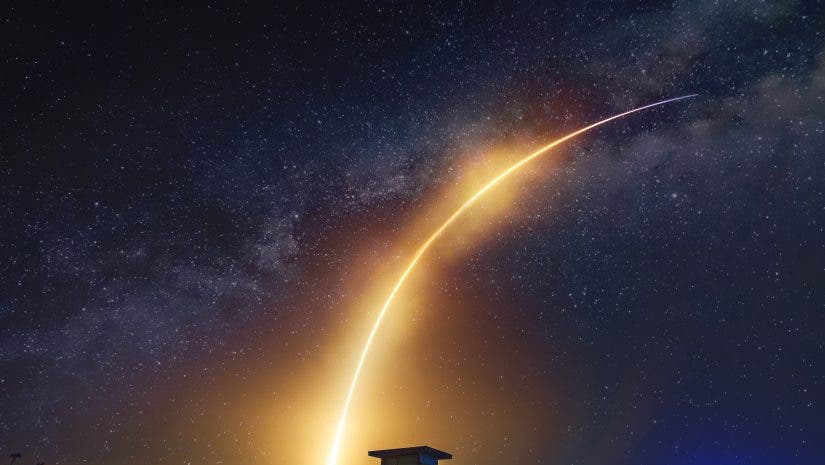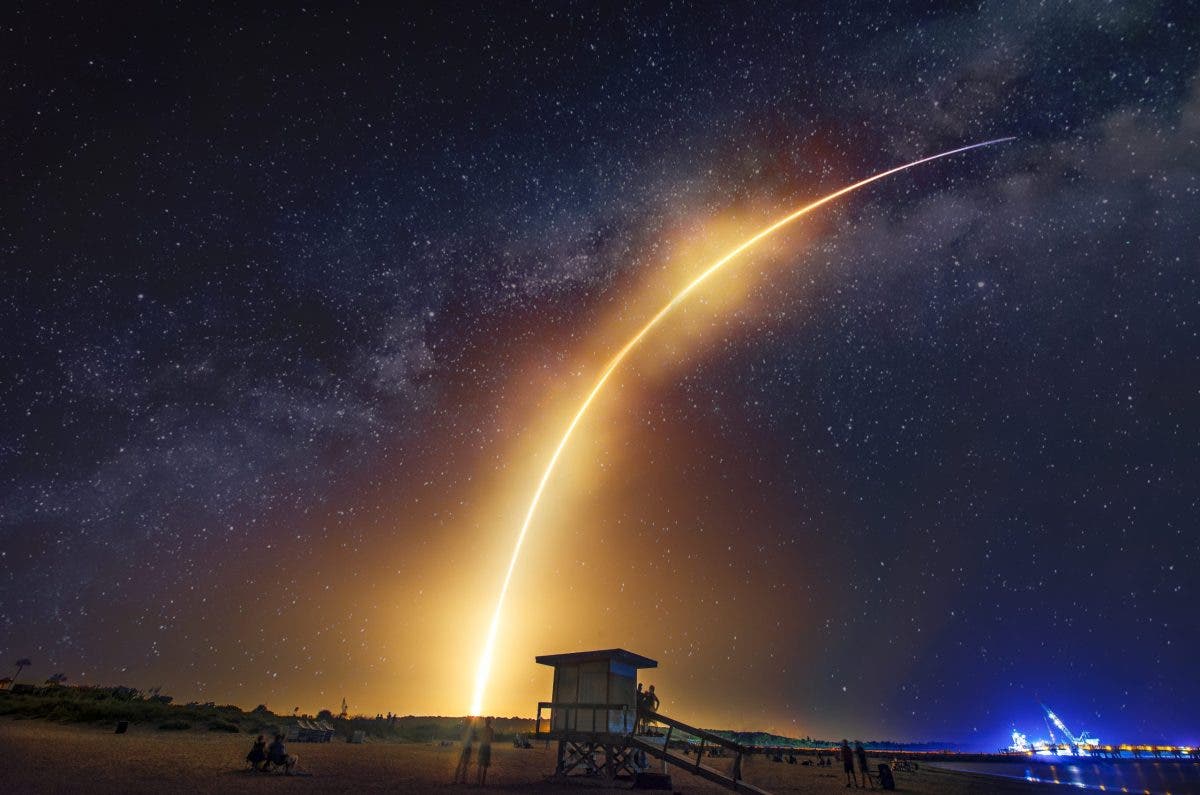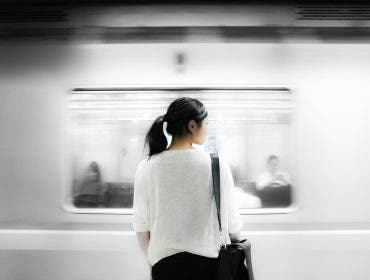From powerful meteor showers to eye-popping northern lights, 2024 was a dream for astrophotographers who love picturesque night adventures—and the fun is far from over.
My new National Geographic book is entitled, “100 Nights of a Lifetime: The World’s Ultimate Adventures After Dark.” Available on December 3, it highlights dozens upon dozens of enchanting and picturesque night adventures that deserve space on your memory cards. Photographers will especially find the book handy because of the National Geographic imagery. There’s a photo that accompanies each experience, providing inspiration on how to bring these night scenes to life.
The book stems from my own personal fascination with the night sky. It’s a passion that’s sent me around the world reporting on after-dark awe, from camping on the Greenland Ice Sheet and stargazing in Chile’s remote Atacama Desert to aurora hunting in Iceland and joining twilight safaris in the Brazilian Pantanal. The project is some three years in the making, and it couldn’t come at a better time.
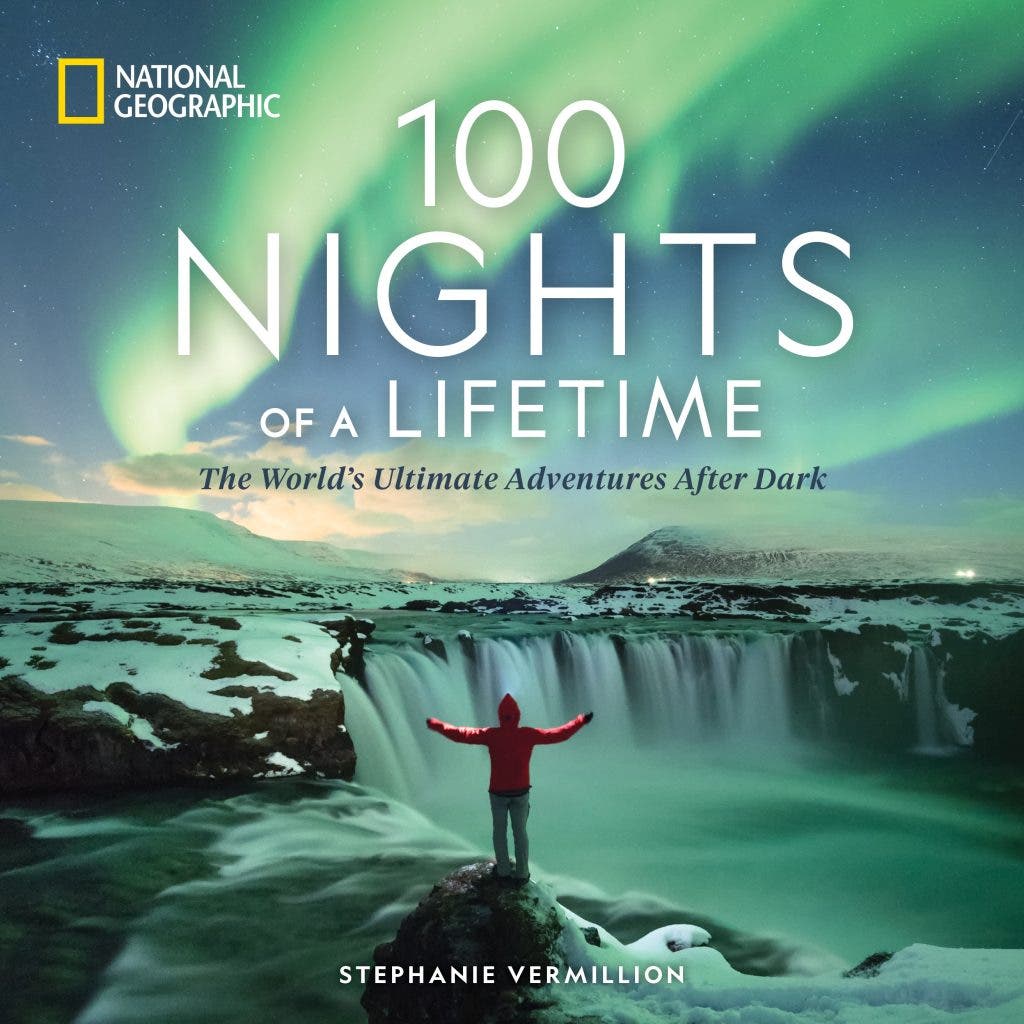
Interest in astrophotography has soared since the pandemic, and innovations in low-light gear, particularly mirrorless cameras, are making it easier than ever to capture the world after dark. Consider 100 Nights of a Lifetime your bucket list for photographing lots of picturesque night adventures. Let this quick sneak peek at five experiences and images from the book spark your creativity—and wanderlust.
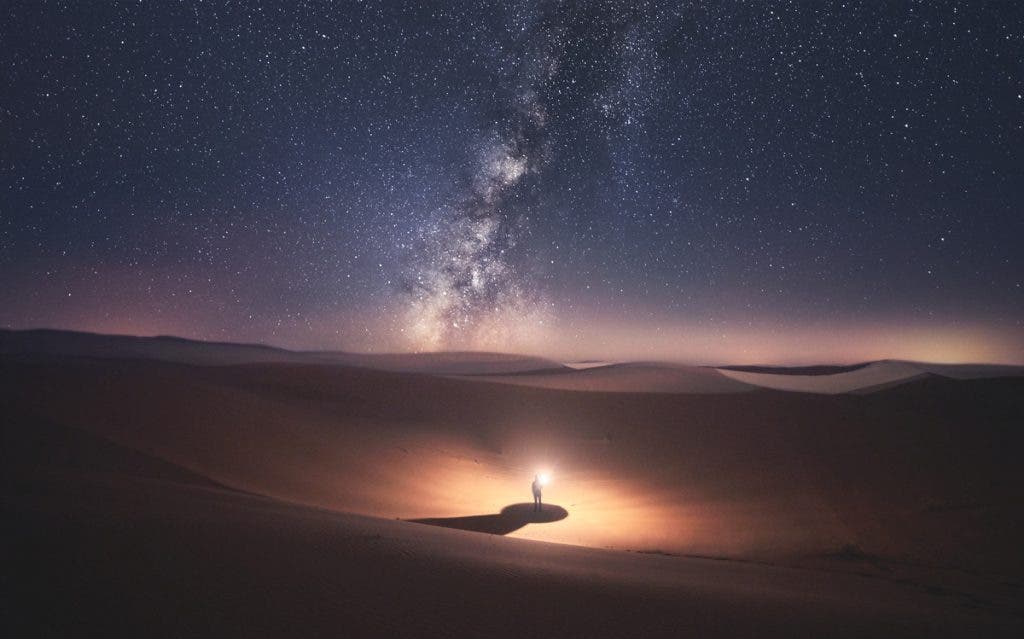
Sahara Desert Stargazing, Morocco
Up to one-third of the world’s population can’t see the Milky Way due to light pollution. That’s why far-flung escapes like the Sahara Desert are a stargazer’s, and astrophotographer’s, dream. Here, countless stars bejewel pristine obsidian skies, and photographers have all sorts of marvels to capture: planets and deep space objects, wide shots with the full Milky Way, soaring meteors, and jaw-dropping golden hours that bookend the picturesque night adventures.
In the book, you’ll learn how, where, and when to camp in Morocco’s dreamy swath of the 3.6-million-square-mile desert—an adventure that makes astrophotography like the starry scene from this image in the book attainable.
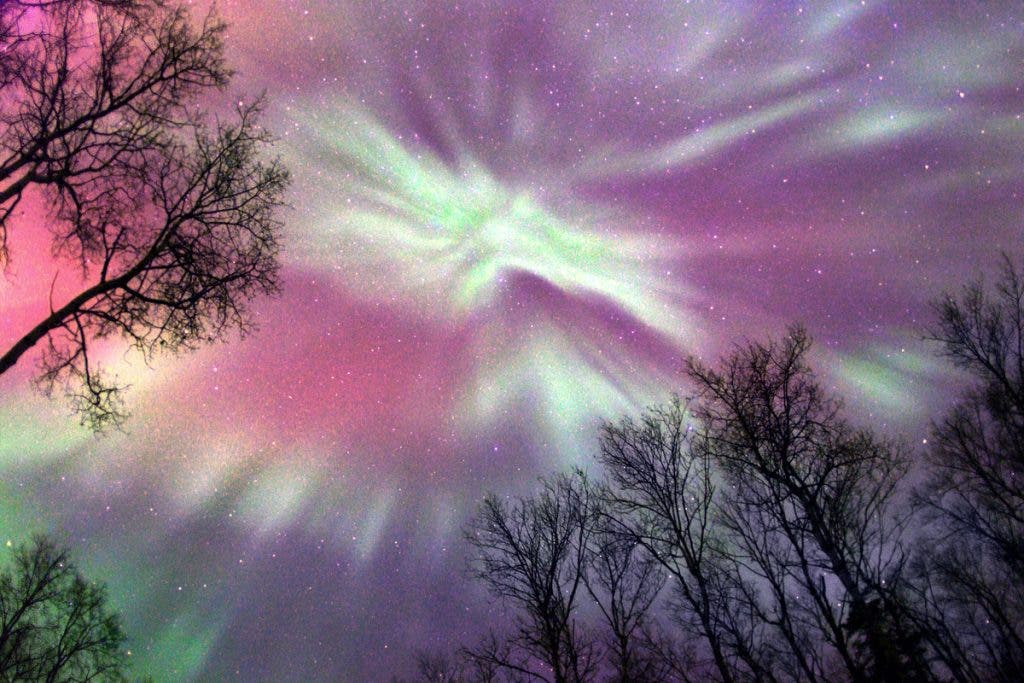
Great Lakes Aurora Hunting, Minnesota
It’s been a lucky year for northern lights chasers, and an even luckier year for contiguous U.S. aurora photographers. With the sun at its 11-year peak of activity, the northern lights are the strongest they’ve been in the past decade—so much so that they’re producing displays as far south as Texas and Florida. While these deep-south sightings are still rare, there is one lower 48 region that sees relatively frequent lights displays during the sun’s activity spike: the Great
Lakes.
The region’s far-north locale is well aligned with earth’s geomagnetic pole, which means it’s
arguably the best-positioned region for catching auroras in the lower 48 states. It also has
myriad aurora perches to choose from. My favorite: inky forests or scenic lakes in DarkSky
International-certified places like Voyageurs National Park and Boundary Waters Canoe Area
Wilderness in Minnesota.

Blackwater Diving, Florida
Every night, around 11 billion tons of sparkly sea creatures journey from the ocean’s dim twilight zone (roughly 650 to 3,280 feet deep) to the water’s surface for feasting. It’s the world’s largest animal migration, not to mention one of its most photogenic. Divers can partake in blackwater drift dives to admire and photograph the shimmery migrators, which include small fish, jellies, shrimp, and sometimes the rare lantern fish.
What makes the night particularly picturesque: bioluminescence, which helps many of these sea creatures glow. Florida’s Atlantic Coast is among the contiguous Unites States’ best spots to see creatures like this shimmery flying fish, pictured above. (Head here for more tips on underwater photography)
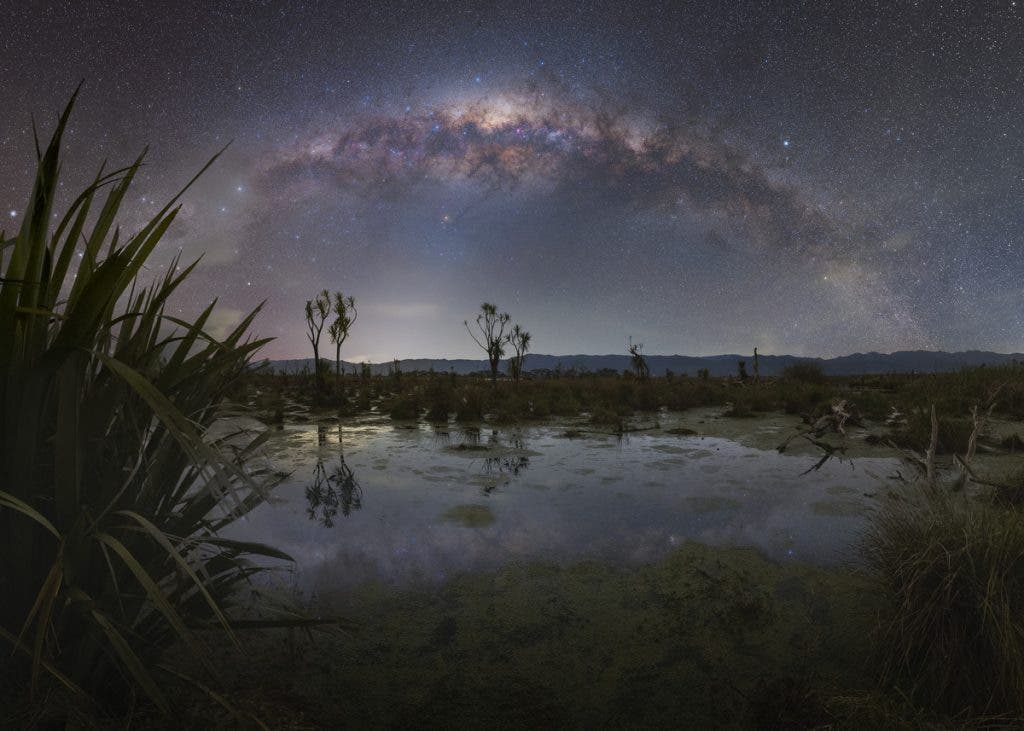
Wairarapa Dark Sky Reserve, New Zealand
Craving stellar stars? Journey to New Zealand, a country that’s so dedicated to protecting its nightscapes. Also, it’s vying to become one of the first DarkSky International-certified Dark Sky Nations. You can admire a treasure trove of space sights throughout the country, but one of the most exciting sky-watching spots is the 1,415-square-mile Wairarapa Dark Sky Reserve.
This getaway, located near Wellington, is one of the newest DarkSky-certified destinations in New Zealand. Its protected skies are pristine enough to see deep-space objects like the Tarantula Nebula — best viewed through a telescope — or the dynamic Milky Way, as this dazzling Wairarapa Moana Wetlands image from the book shows. To learn how to create a similar star shot, check out our guide to Milky Way panorama photography.
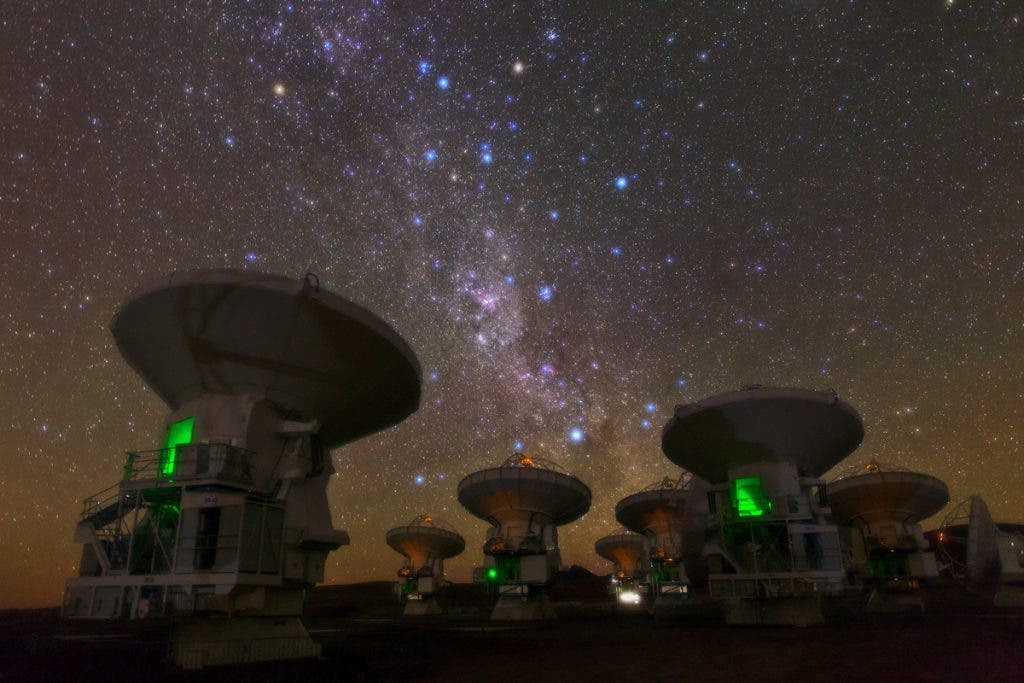
Atacama Desert Stargazing, Chile
If there’s one place astrophotographers should have on their bucket list, it’s Chile’s remote Atacama Desert—and this image from the book proves why. The arid Atacama Desert is the driest nonpolar desert on the planet, and it sees near-constant clear skies. That’s why it’s home to many of the world’s most powerful telescopes, including the Atacama Large Millimeter/submillimeter Array, better known as ALMA, which studies how the universe and planets first formed.
Come dusk, most Atacama travelers join guided tours for narration and telescope peeks at the night sky. Traveling for photography? Hire astrophotographer and guide Mauro Cuevas, founder of 3K Private Tours. On my trip to the Atacama, Cuevas took my husband and me deep into the desert’s Martian landscapes for a surreal night of photography, stargazing, and hot tea and snacks. Since Cuevas himself is an astrophotographer, he knows the best stops for nightscape compositions.
Must-Have Night Photography Gear
With today’s innovative smartphones, you don’t need much to snap a nice night photo. That
said, investing in high-quality cameras, lenses, and gear can drastically elevate your
astrophotography. Here are some must-haves if you’re serious about photographing after dark:
- A low-light-friendly camera, such as the Sony A7RV or the Nikon Z 7II, will help you retain image quality, even in dark settings.
- A travel tripod, like the fan-favorite Peak Design 5-Section Aluminum Travel Tripod, is a must-have to keep your camera steady during slow-shutter capturing.
- Filters like the Tiffen 4 Point Star Filter and Hoya Creative Star 4X Cross Screen Glass. Filters can help you accentuate bright stars and planets, and their colors and luminosity, in your night shots.
- A headlamp is a must to stay safe while navigating the dark. Make sure your headlamp has a red-light mode to protect your night vision.
- Editing software like Adobe Lightroom lets you enhance exposure and color, or decrease the noisiness, of your night images. To leverage Lightroom’s full editing functionality, photograph your images in RAW.
For more astrophotography inspiration, my book, 100 Nights of a Lifetime: The World’s
Ultimate Adventures After Dark, will be available on Dec. 3, 2024.
